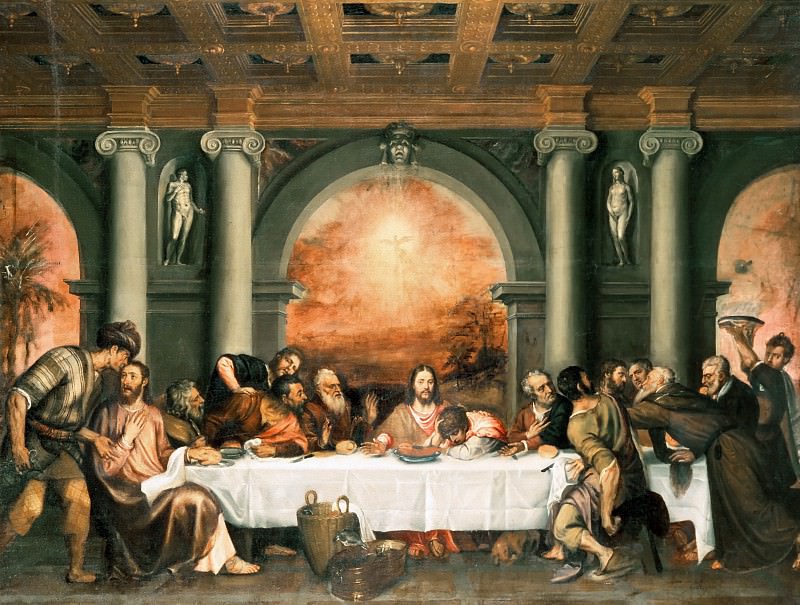Hieronymus Bosch: The Enigmatic Master of Early Netherlandish Art
Hieronymus Bosch, born Jheronimus van Aken in 1450 in 's-Hertogenbosch, a town in the Duchy of Brabant (present-day Netherlands), is a figure shrouded in mystery. His work, characterized by fantastical imagery and intricate detail, has captivated and perplexed art enthusiasts and scholars for centuries. As one of the most significant representatives of Early Netherlandish painting, Bosch's art serves as a window into the medieval mind, reflecting the spiritual and moral concerns of his time.
Early Life and Influences
Bosch was born into a family of painters, providing him with an artistic environment from a young age. His grandfather, Jan van Aken, and his father, Anthonius van Aken, were both painters, which likely played a crucial role in Bosch's artistic development. Despite the lack of concrete evidence about his training, it is believed that Bosch's early works were influenced by the Gothic tradition prevalent in his family and region.
Thematic Depth and Symbolism
Bosch's art is renowned for its complex symbolism and themes. His paintings often delve into religious and moral narratives, depicting the eternal struggle between good and evil, the consequences of sin, and the fragility of human life. His works are a visual representation of the medieval belief system, where every action and thought had spiritual significance.
One of Bosch's most famous works, "The Garden of Earthly Delights," is a triptych that vividly illustrates these themes. The left panel represents the Garden of Eden, the central panel depicts a surreal, hedonistic world of earthly pleasures, and the right panel portrays the torments of Hell. This painting is a moral allegory, warning of the consequences of a life devoted to sin and indulgence.
Unique Artistic Style
Bosch's artistic style is marked by its meticulous detail and imaginative, almost surreal, imagery. Unlike his contemporaries, who often focused on realistic depictions of the natural world, Bosch's work is filled with fantastical creatures and bizarre scenes. His use of vibrant colors and detailed textures creates a dreamlike quality that draws viewers into his intricate narratives.
In "The Temptation of St. Anthony," another of his renowned works, Bosch employs his distinctive style to depict the trials and temptations faced by the saint. The painting is a chaotic scene filled with demonic figures and strange hybrid creatures, showcasing Bosch's ability to blend the grotesque with the divine.
Legacy and Influence
Bosch's work left an indelible mark on the art world, influencing not only his contemporaries but also generations of artists to come. His unique vision and innovative approach to storytelling through art paved the way for future movements, such as Surrealism, which found inspiration in his fantastical imagery and exploration of the unconscious mind.
The Surrealists, including artists like Salvador Dalí and Max Ernst, admired Bosch for his ability to convey complex psychological and existential themes through his work. Dalí, in particular, considered Bosch a precursor to Surrealism, citing his imaginative approach and dreamlike compositions as significant influences on his own art.
Interpretation and Analysis
The interpretation of Bosch's work is a subject of ongoing debate among art historians. His paintings are rich with symbolism, often requiring a deep understanding of medieval theology, folklore, and iconography to fully appreciate. Some scholars view his work as a moralistic commentary on the vices and follies of mankind, while others see it as a more personal exploration of Bosch's own fears and anxieties.
In "The Haywain Triptych," Bosch presents a critique of materialism and greed. The central panel, depicting a massive haywain being pursued by a frenzied crowd, symbolizes the pursuit of earthly wealth and its ultimately destructive nature. This theme is further emphasized by the chaotic scenes of Hell in the right panel, serving as a stark warning of the spiritual peril associated with materialism.
The Enduring Mystery of Bosch
Despite extensive research and analysis, much about Bosch's life and work remains a mystery. Few records exist about his personal life, and only a limited number of his paintings have survived. This scarcity of information has only heightened the intrigue surrounding Bosch, making his work a fertile ground for speculation and interpretation.
His art, characterized by its enigmatic and often unsettling imagery, continues to captivate audiences today. Exhibitions of his work draw large crowds, and his influence can be seen in various forms of modern media, including literature, film, and video games. The enduring appeal of Bosch's work lies in its ability to provoke thought and elicit strong emotional responses, encouraging viewers to ponder the deeper meanings behind his fantastical scenes.
The Legacy of "The Garden of Earthly Delights"
"The Garden of Earthly Delights" stands as a testament to Bosch's genius and remains one of the most studied and admired works in art history. Its intricate details and myriad of symbols offer endless possibilities for interpretation, ensuring its place as a cornerstone of Bosch's legacy.
Art historians have suggested various readings of the triptych, ranging from theological and philosophical interpretations to psychoanalytical analyses. The painting's central panel, with its depiction of a world teeming with strange and fantastical figures, is particularly intriguing. Some see it as a utopian vision of humanity free from sin, while others interpret it as a cautionary tale about the dangers of succumbing to earthly temptations.
Conclusion
Hieronymus Bosch's art is a profound exploration of the human condition, reflecting the anxieties, beliefs, and moral concerns of his time. His unique vision and innovative approach to painting have secured his place as one of the most important and influential artists in history. Bosch's work challenges viewers to look beyond the surface, encouraging a deeper contemplation of the complexities of human nature and the eternal struggle between good and evil. As we continue to study and interpret his paintings, Bosch's enigmatic and imaginative art remains as relevant and captivating as ever, offering new insights and inspiring future generations of artists and scholars.




